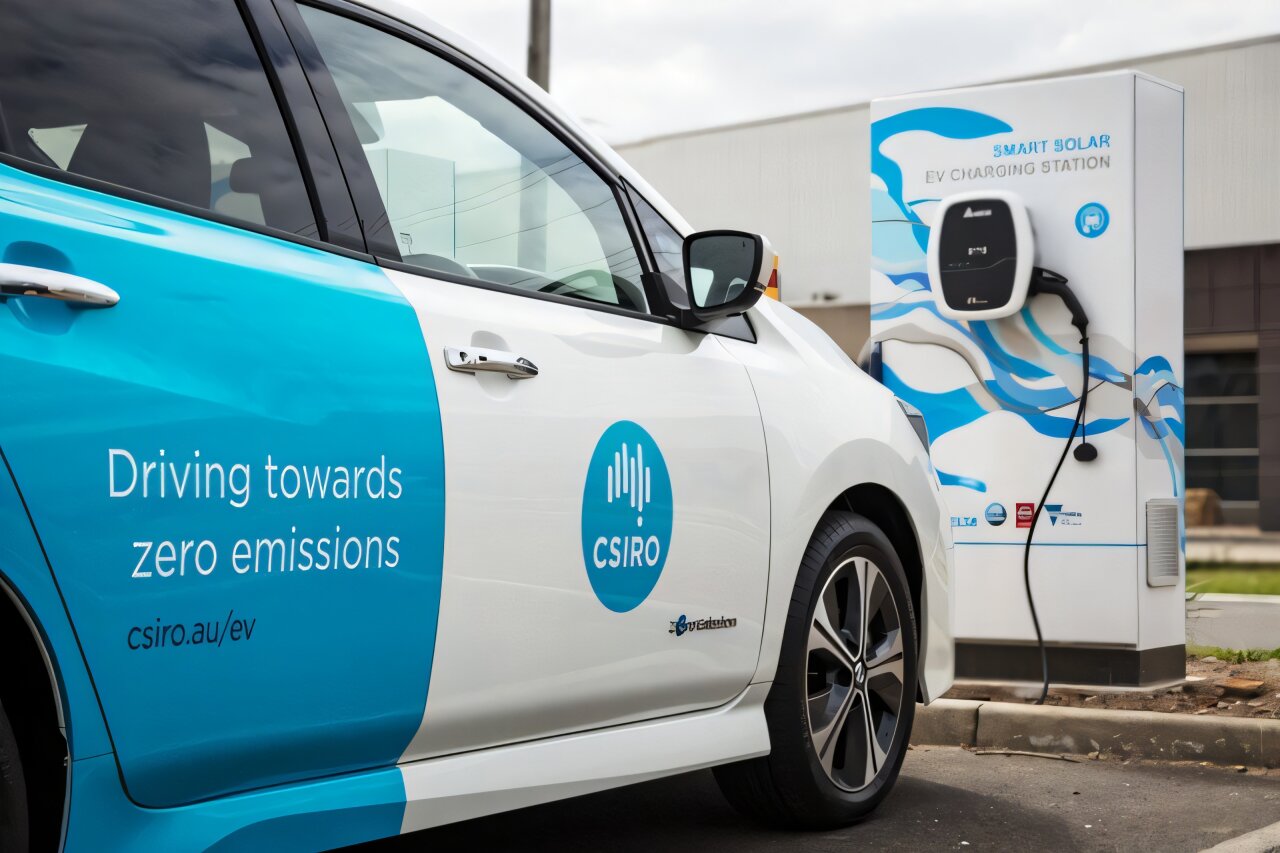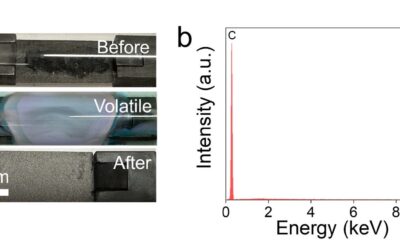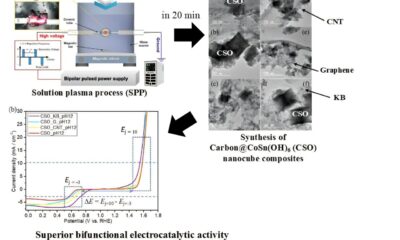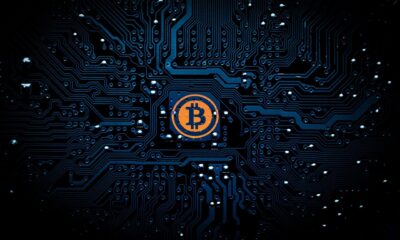Tech
Changing gears: Your guide to low emissions transport

Curious about decarbonizing your personal transport? Perhaps soaring fuel costs, new financial rebates and vehicle options have sparked your interest? Maybe it is your growing appetite for environmental action?
If so, you’re not alone. The Electric Vehicle Council’s annual State of EVs report found that 46,624 electric cars were sold in the first half of 2023, compared to 39,353 in the previous year. EVs now account for 8.4% of all new car sales in Australia, but we need to reach 50% in order to meet climate emission targets.
We’re unpacking the latest low emissions transport options. We’ll also touch on the challenges and critical research that is getting us on track for a cleaner transport future.
Taking charge of low emissions transport
Transport is Australia’s third largest source of greenhouse gas emissions and is increasing faster than any other sector. Cars account for roughly half of these emissions. Switching to an EV can have a huge impact on reducing your carbon footprint, even if charged from the grid (that mostly relies on fossil fuels for the time being).
Despite more EVs being introduced in Australia, supply constraints and high demand continues to limit model choice and availability.
Let’s explore types of EVs and how they compare to standard Internal Combustion Engine (ICE) cars.
Hybrid
Powered by an internal combustion and electric motor. Regenerative braking and the ICE automatically recharge the battery.
- Pros: Thrifty on fuel, lower emissions, strong resale value, self-charging battery
- Cons: Higher purchase and maintenance costs, battery replacement is expensive, limited supply for some models
Plug-in hybrid electric vehicle (PHEV)
Offers the flexibility of using petrol or recharging the battery by plugging into the grid.
- Pros: Better fuel efficiency than a standard hybrid as it uses the electric motor more frequently, low emissions, opportunity to recharge with renewable energy
- Cons: Higher purchase cost, higher maintenance costs, limited model choice and availability
Battery Electric Vehicles (BEV)
Uses electrical energy stored in a rechargeable battery as its sole source of propulsion.
- Pros: Low running and maintenance costs, fast charging capability, silent, extra front boot space (where engine usually sits), zero emissions driving if charged with renewable energy
- Cons: Higher purchase cost, limited public charging infrastructure, reduced storage capacity in some models, it may require extra home charging investment, limited model choice and supply
There’s more to the EV scene than just cars
Registrations of electric motorbikes, scooters and mopeds have taken off in recent years. They offer an affordable, low emissions transport alternative. With limited range and low top speed, scooters and mopeds are suited to inner city commutes. In some states they only require a C-class driver license.
The rise of micromobility
Micromobility is the use of small, mostly electric powered vehicles for short urban trips. They have rapidly surged in popularity since the first Australian public trials in 2018.
E-bikes, e-scooters, electric unicycles and e-skateboards offer affordable, fun and convenient mobility. They offer the potential to reduce traffic congestion, pollution, emissions and gaps in public transport.
But our relationship with this emerging transport mode has been strained. Widespread concerns for rider and pedestrian safety, infrastructure challenges and conflicting regulation between states and territories are some of the barriers.
Beyond electric: Powering ahead with clean hydrogen
No harmful emissions, greater range and fast refueling. It’s easy to see why some consider clean hydrogen a fuel of the future.
Hydrogen-powered vehicles use an internal fuel cell. The driver refuels at a hydrogen bowser in around five minutes, like a petrol or diesel car. However, there is little hydrogen refueling infrastructure in Australia.
Currently, there is a limited range of hydrogen-powered vehicles in Australia, which are not yet available for private purchase. The development and deployment of hydrogen is better suited to heavy transport vehicles such as trucks and buses. This energy is compatible with large loads, long journeys and a central base for refueling.
Navigating roadblocks
The predicted surge in EV ownership from the late 2020s will be driven by improved affordability, model availability and charging facilities. But our aging energy infrastructure (and phase-out of fossil fuel generation) will require more investment and distribution to cope with our complex energy habits.
Australia has just over 2000 public EV charging stations today. To keep pace with the growing number of electric vehicles, the Australian Government plans to boost that to 50,000 by 2030.
EV resource production and manufacturing also present challenges. Each vehicle requires around 200 kilograms of critical minerals, such as cobalt, nickel and lithium. That’s six times more than a petrol car.
When EV batteries reach the end of their life, we need better strategies to recycle or repurpose them. While there are existing EV battery recycling programs in Australia, there’s more work to be done in this area.
Citation:
Changing gears: Your guide to low emissions transport (2025, August 18)
retrieved 18 August 2025
from https://techxplore.com/news/2025-08-gears-emissions.html
This document is subject to copyright. Apart from any fair dealing for the purpose of private study or research, no
part may be reproduced without the written permission. The content is provided for information purposes only.
Tech
Artificial tendons give muscle-powered robots a boost

Our muscles are nature’s actuators. The sinewy tissue is what generates the forces that make our bodies move. In recent years, engineers have used real muscle tissue to actuate “biohybrid robots” made from both living tissue and synthetic parts. By pairing lab-grown muscles with synthetic skeletons, researchers are engineering a menagerie of muscle-powered crawlers, walkers, swimmers, and grippers.
But for the most part, these designs are limited in the amount of motion and power they can produce. Now, MIT engineers are aiming to give bio-bots a power lift with artificial tendons.
In a study appearing today in the journal Advanced Science, the researchers developed artificial tendons made from tough and flexible hydrogel. They attached the rubber band-like tendons to either end of a small piece of lab-grown muscle, forming a “muscle-tendon unit.” Then they connected the ends of each artificial tendon to the fingers of a robotic gripper.
When they stimulated the central muscle to contract, the tendons pulled the gripper’s fingers together. The robot pinched its fingers together three times faster, and with 30 times greater force, compared with the same design without the connecting tendons.
The researchers envision the new muscle-tendon unit can be fit to a wide range of biohybrid robot designs, much like a universal engineering element.
“We are introducing artificial tendons as interchangeable connectors between muscle actuators and robotic skeletons,” says lead author Ritu Raman, an assistant professor of mechanical engineering (MechE) at MIT. “Such modularity could make it easier to design a wide range of robotic applications, from microscale surgical tools to adaptive, autonomous exploratory machines.”
The study’s MIT co-authors include graduate students Nicolas Castro, Maheera Bawa, Bastien Aymon, Sonika Kohli, and Angel Bu; undergraduate Annika Marschner; postdoc Ronald Heisser; alumni Sarah J. Wu ’19, SM ’21, PhD ’24 and Laura Rosado ’22, SM ’25; and MechE professors Martin Culpepper and Xuanhe Zhao.
Muscle’s gains
Raman and her colleagues at MIT are at the forefront of biohybrid robotics, a relatively new field that has emerged in the last decade. They focus on combining synthetic, structural robotic parts with living muscle tissue as natural actuators.
“Most actuators that engineers typically work with are really hard to make small,” Raman says. “Past a certain size, the basic physics doesn’t work. The nice thing about muscle is, each cell is an independent actuator that generates force and produces motion. So you could, in principle, make robots that are really small.”
Muscle actuators also come with other advantages, which Raman’s team has already demonstrated: The tissue can grow stronger as it works out, and can naturally heal when injured. For these reasons, Raman and others envision that muscly droids could one day be sent out to explore environments that are too remote or dangerous for humans. Such muscle-bound bots could build up their strength for unforeseen traverses or heal themselves when help is unavailable. Biohybrid bots could also serve as small, surgical assistants that perform delicate, microscale procedures inside the body.
All these future scenarios are motivating Raman and others to find ways to pair living muscles with synthetic skeletons. Designs to date have involved growing a band of muscle and attaching either end to a synthetic skeleton, similar to looping a rubber band around two posts. When the muscle is stimulated to contract, it can pull the parts of a skeleton together to generate a desired motion.
But Raman says this method produces a lot of wasted muscle that is used to attach the tissue to the skeleton rather than to make it move. And that connection isn’t always secure. Muscle is quite soft compared with skeletal structures, and the difference can cause muscle to tear or detach. What’s more, it is often only the contractions in the central part of the muscle that end up doing any work — an amount that’s relatively small and generates little force.
“We thought, how do we stop wasting muscle material, make it more modular so it can attach to anything, and make it work more efficiently?” Raman says. “The solution the body has come up with is to have tendons that are halfway in stiffness between muscle and bone, that allow you to bridge this mechanical mismatch between soft muscle and rigid skeleton. They’re like thin cables that wrap around joints efficiently.”
“Smartly connected”
In their new work, Raman and her colleagues designed artificial tendons to connect natural muscle tissue with a synthetic gripper skeleton. Their material of choice was hydrogel — a squishy yet sturdy polymer-based gel. Raman obtained hydrogel samples from her colleague and co-author Xuanhe Zhao, who has pioneered the development of hydrogels at MIT. Zhao’s group has derived recipes for hydrogels of varying toughness and stretch that can stick to many surfaces, including synthetic and biological materials.
To figure out how tough and stretchy artificial tendons should be in order to work in their gripper design, Raman’s team first modeled the design as a simple system of three types of springs, each representing the central muscle, the two connecting tendons, and the gripper skeleton. They assigned a certain stiffness to the muscle and skeleton, which were previously known, and used this to calculate the stiffness of the connecting tendons that would be required in order to move the gripper by a desired amount.
From this modeling, the team derived a recipe for hydrogel of a certain stiffness. Once the gel was made, the researchers carefully etched the gel into thin cables to form artificial tendons. They attached two tendons to either end of a small sample of muscle tissue, which they grew using lab-standard techniques. They then wrapped each tendon around a small post at the end of each finger of the robotic gripper — a skeleton design that was developed by MechE professor Martin Culpepper, an expert in designing and building precision machines.
When the team stimulated the muscle to contract, the tendons in turn pulled on the gripper to pinch its fingers together. Over multiple experiments, the researchers found that the muscle-tendon gripper worked three times faster and produced 30 times more force compared to when the gripper is actuated just with a band of muscle tissue (and without any artificial tendons). The new tendon-based design also was able to keep up this performance over 7,000 cycles, or muscle contractions.
Overall, Raman saw that the addition of artificial tendons increased the robot’s power-to-weight ratio by 11 times, meaning that the system required far less muscle to do just as much work.
“You just need a small piece of actuator that’s smartly connected to the skeleton,” Raman says. “Normally, if a muscle is really soft and attached to something with high resistance, it will just tear itself before moving anything. But if you attach it to something like a tendon that can resist tearing, it can really transmit its force through the tendon, and it can move a skeleton that it wouldn’t have been able to move otherwise.”
The team’s new muscle-tendon design successfully merges biology with robotics, says biomedical engineer Simone Schürle-Finke, associate professor of health sciences and technology at ETH Zürich.
“The tough-hydrogel tendons create a more physiological muscle–tendon–bone architecture, which greatly improves force transmission, durability, and modularity,” says Schürle-Finke, who was not involved with the study. “This moves the field toward biohybrid systems that can operate repeatably and eventually function outside the lab.”
With the new artificial tendons in place, Raman’s group is moving forward to develop other elements, such as skin-like protective casings, to enable muscle-powered robots in practical, real-world settings.
This research was supported, in part, by the U.S. Department of Defense Army Research Office, the MIT Research Support Committee, and the National Science Foundation.
Tech
The Best Cyber Monday Streaming Deals With a Convenient Roommate’s Email Address

HBO knows you’re bored and cold. It wants you to Max and chill with Noah Wyle in scrubs. The company offers some of the best Cyber Monday streaming deals with a ridiculously low-priced $3/month offer for basic HBO Max (it’s the version with ads and 2K streaming, but still, super-cheap). Disney Plus and Hulu deals are bundled up for $5/month. Apple TV wants back in your life for $6.
Of course, this deal is only meant for new customers. Not boring ol’ existing customers. If you already have basic HBO Max, you’re already paying $11 for the same service, and HBO would like you to keep doing that. Streaming apps are banking on you being complacent and happy in your streaming life. Maybe they’re even taking you for granted.
Sometimes you can get the current deal just by threatening to cancel, or actually canceling, your account. Suddenly, you’re an exciting new customer again! Another method is by using an alternate email account (perhaps your spouse’s or roommate’s?) and alternate payment information as a new customer. If you do use a burner email (you did not hear this from me), check in on your favorite app’s terms of service to make sure you’re not in violation by re-enrolling with different emails. I’ll also issue the caveat that you lose all your viewing data and tailored suggestions if you sign up anew.
But times and wallets are tight! And $3 HBO Max sounds pretty good. After all, every middle-aged American man needs to rewatch The Wire once every five years or so—assuming he’s not the kind of middle-aged man who rewatches The Sopranos instead. Here are the current best streaming deals for Cyber Monday 2025.
Devon Maloney; ARCHIVE ID: 546772
Regular price: $80
Tech
SAP user group chair warns of AI low-hanging fruit risks | Computer Weekly

The UK and Ireland SAP User Group (UKISUG) Connect 25 conference has opened in Birmingham with a keynote session recognising the challenges business face.
The user group itself has adapted to changes in the technology market such as the advent of artificial intelligence (AI) in business applications and the economic climate that has a profound effect on its members’ ability to deliver value with enterprise technology.
In his keynote presentation, Conor Riordan, chair of UKISUG, said: “As an organisation, we have to change, to position ourselves as we move from the old to the new.”
The user group has a 2030 plan, recognising the shifts in enterprise software. For instance, there is the shift to no-code and low-code tooling, which has implications on the agility of enterprise software development. Riordan noted that the current business climate and geopolitical volatility means that there is a huge pressure to reduce costs, leading to cuts in training budgets and the challenge of delivering more with less, adding: “We need to have process change.”
Moving to a future where organisations are using data to make more dependable decisions, Riordan noted that SAP is moving to a dynamic ecosystem of applications and AI, but the challenge is how quickly businesses can start taking advantage of the AI now available in their business applications. “We see members say SAP AI will help them,” Riordan said.
But many are concerned how the new technology now available will deliver a return on investment (ROI). For Riordan, IT decision-makers need to be wary of tackling the so-called low-hanging fruit, the use cases that the industry sells to the executive team: “It is really complex work, and the low-hanging fruit is not that low hanging. It will take years, not months, to deliver value.”
A poll of delegates at the conference found that 78% of respondents are just getting started with AI, while 29% say their AI initiatives have under-delivered.
“This stuff is not easy,” Riordan said, adding that the challenge is one of process re-engineering and culture change, and that he believes humans need to be at the centre of decision-making. “We ask partners to be reasonable in their productivity claims so we can all succeed together.”
The Value of AI in the UK: Growth, people & data from SAP and Oxford Economics, which was published in October 2025, notes that customers are investing £16m in AI on average this year. The report’s authors predict this will increase by 40% within the next two years. However, the theme coming out of the keynote session at Connect25 is that few companies are really using AI.
Another big topic covered during the keynote is the end of support for SAP products. With SAP’s 2027 maintenance deadline for SAP ECC 6.0 fast approaching, many organisations are now embarking on their migration journey to SAP S/4Hana. More than half (54%) of respondents said that gaining access to SAP’s AI offerings will influence their future deployment of SAP.
Among attendees of Connect25, 49% said they are working towards the 2027 deadline. Riordan called on SAP to help customers to move to the cloud and build a tangible business case.
During her keynote speech, Leila Romane, managing director of SAP UK & Ireland, spoke about the AI opportunity, saying: “We are helping customers unleash new value with business AI.”
SAP’s strategy is to drive business value through the power of AI, data and its enterprise applications, with the SAP Cloud integral in SAP’s strategy to deliver AI-enablement across its enterprise software suite. Romane said SAP recognised that its customers were all at different stages of their cloud journey, adding: “Our commitment is to help you move.”
-

 Sports1 week ago
Sports1 week agoWATCH: Ronaldo scores spectacular bicycle kick
-

 Entertainment1 week ago
Entertainment1 week agoWelcome to Derry’ episode 5 delivers shocking twist
-

 Politics1 week ago
Politics1 week agoWashington and Kyiv Stress Any Peace Deal Must Fully Respect Ukraine’s Sovereignty
-

 Business1 week ago
Business1 week agoKey economic data and trends that will shape Rachel Reeves’ Budget
-

 Tech6 days ago
Tech6 days agoWake Up—the Best Black Friday Mattress Sales Are Here
-

 Politics1 week ago
Politics1 week ago53,000 Sikhs vote in Ottawa Khalistan Referendum amid Carney-Modi trade talks scrutiny
-

 Fashion1 week ago
Fashion1 week agoCanada’s Lululemon unveils team Canada kit for Milano Cortina 2026
-

 Tech1 day ago
Tech1 day agoGet Your Steps In From Your Home Office With This Walking Pad—On Sale This Week


















